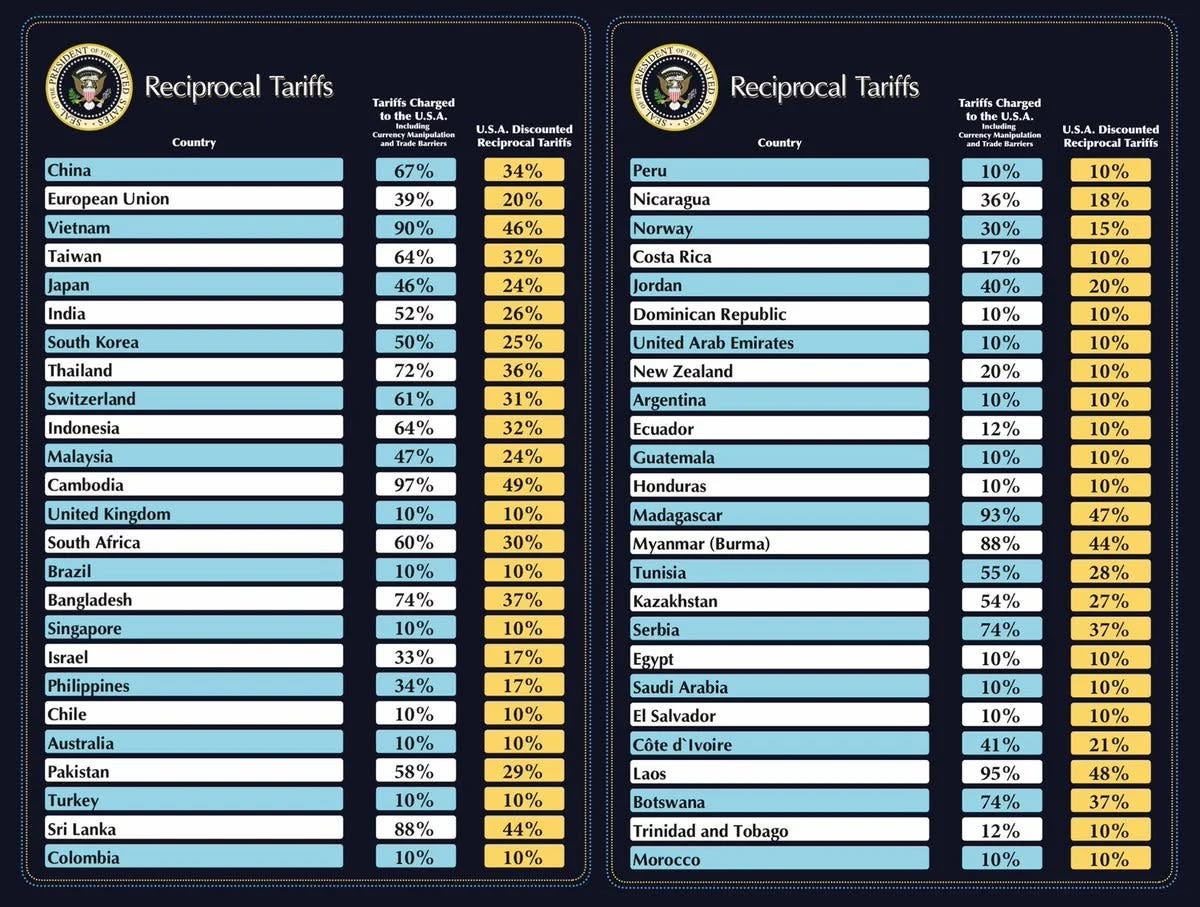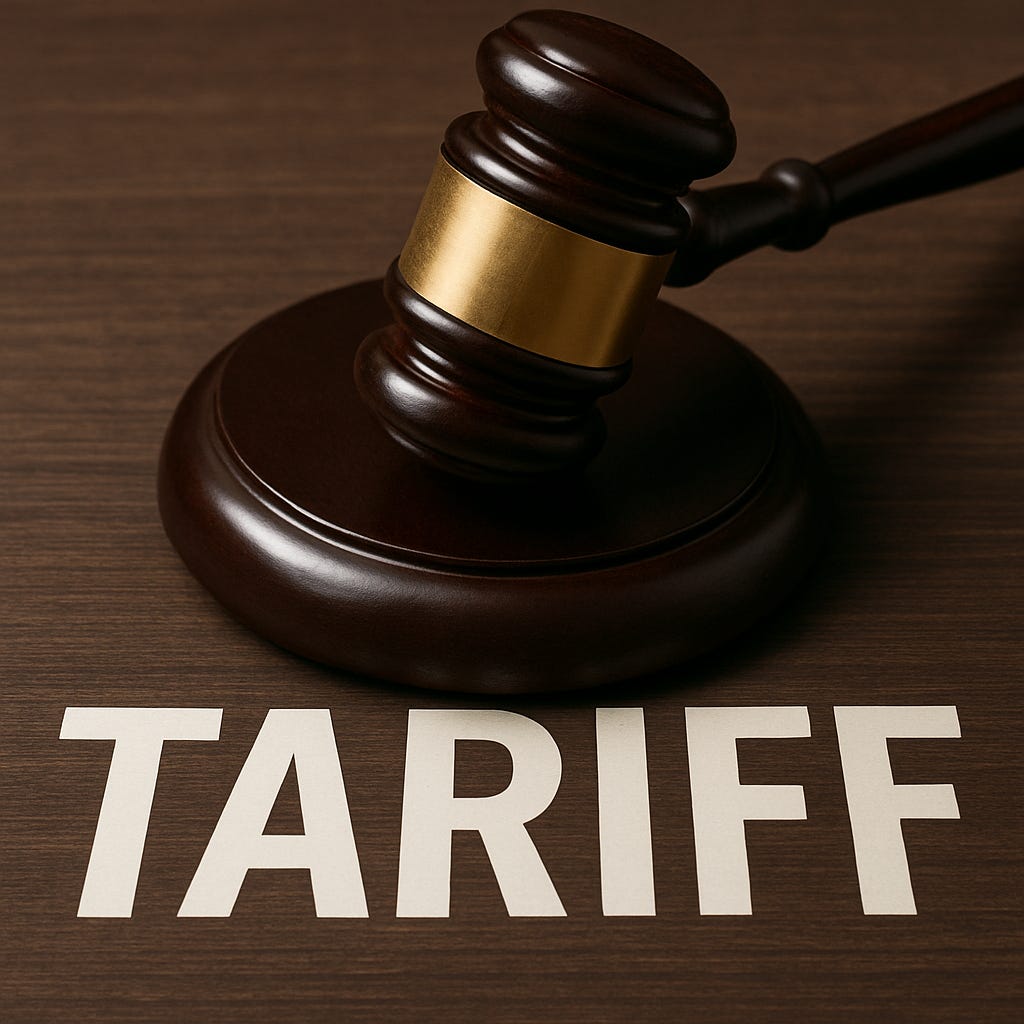A recent U.S. federal court ruling has significantly challenged the President's authority to impose tariffs under emergency powers, creating a major shake-up in U.S. trade policy. The decision, issued by the U.S. Court of International Trade on May 28, 2025, found that the President exceeded the authority granted by the International Emergency Economic Powers Act (IEEPA) of 1977. This ruling has led to immediate appeals and raised questions about the future of global trade and presidential power.
The Court of Appeals accepted the White House's appeal to the earlier ruling - the one that requested they halt their tariffs within 10 days - saying that the tariffs plans could remain in place while the court "considers the motions paper", according to BBC.
The legal battle began on April 2, 2025, when President Trump announced a sweeping set of tariffs, including a general 10% baseline increase on goods from over 60 trading partners, with some rates going as high as 46% on certain partners like Vietnam, and a 25% rate specifically on Canada and Mexico. The administration justified these tariffs by citing large, persistent goods trade deficits, framing them as a national security threat. Additionally, separate tariffs were imposed on China, Canada, and Mexico, explicitly tied to fentanyl trafficking, also under a national emergency declaration.
Crucially, the IEEPA, the legal basis for these actions, had never before been used to impose such broad tariffs. Typically, IEEPA is applied to actions like freezing assets or financial sanctions, not widespread import taxes. This unprecedented use quickly led to lawsuits, including one from 12 states led by Oregon and Arizona, and another from five businesses represented by the Liberty Justice Center, all challenging the IEEPA basis for both the reciprocal and fentanyl tariffs.
The U.S. Court of International Trade’s decision on May 28, 2025, was clear: IEEPA does not grant "unbounded tariff authority" to the President. The court reasoned that allowing the President unlimited tariff power would constitute an unconstitutional delegation of Congress's core legislative functions, which are outlined in Article 1, Section 8 of the Constitution, giving Congress the power over taxes, duties, and regulating foreign commerce. The court also noted that the words "tariff" or "tax" are not explicitly mentioned in the IEEPA, suggesting Congress did not intend to grant such specific power through this act.
The court also ruled against the fentanyl tariffs, stating they did not directly "deal with the threats cited in the executive orders in a way IEEPA allows". Instead, the court viewed them as an attempt to apply general economic pressure, which IEEPA does not authorize for that specific problem. The ruling was unanimous from a bipartisan three-judge panel, appointed by presidents from different parties (Obama, Reagan, and Trump), emphasizing its grounding in statutory interpretation and constitutional principles rather than politics.
The immediate effect of the ruling is a permanent injunction, blocking the implementation of the challenged IEEPA tariffs and preventing future tariff increases under this act.
The White House, through spokesman Kustisai, strongly rejected the court's authority, even calling the judges "unelected". An appeal was lodged within minutes of the ruling by President Trump, moving the case to the U.S. Court of Appeals for the Federal Circuit (CAFC). This appeal process could take a year or more, especially if it reaches the Supreme Court. The injunction generally remains in place while the appeal proceeds, continuing the uncertainty for all involved.
This legal battle highlights a fundamental shift in U.S. trade philosophy, moving away from a rules-based system targeting unfair practices towards a results-oriented approach focused on trade balances. Businesses have expressed concern about the tariffs, citing potential damage, inflation, and harm to families and companies. The market reaction to the ruling saw stocks rise and the dollar gain, reflecting a sense of relief from the uncertainty. The ongoing policy shifts also affect business planning and supply chains, leading to discussions about favoring North American production or adopting "China Plus One" strategies to cope with volatility.
It is important to note that IEEPA is not the only tool the President has for imposing tariffs. Other authorities, such as Section 301 (active with China tariffs) and Section 232 (national security provision used for steel and aluminum tariffs), remain in effect and are separate from this IEEPA case.
Regarding Taiwan's semiconductor industry, the specific IEEPA tariffs announced on April 2 were already explicitly exempted from semiconductors. Therefore, the court's blocking of these tariffs does not directly alter the status for semiconductors concerning this specific set of actions. However, uncertainty lingers regarding potential tariffs under other laws like Section 232. While some analyses are skeptical about using Section 232 for tariffs on complex semiconductor-heavy consumer devices due to tracing difficulties, the court's ruling was strictly about IEEPA and does not invalidate actions taken under different statutes.
In summary, while the semiconductor industry was effectively shielded from the blocked IEEPA tariffs, the broader trade policy environment remains unpredictable due to the ongoing legal fight over presidential power and the existence of other tariff authorities. This situation paints a complex picture of ongoing legal and economic shifts that will continue to shape the future of global trade and the stability of international commerce.
This podcast is powered by Google’s Notebook LLM. TechSoda needs your support to continue our good work! Please subscribe and help share among your friends!













Share this post